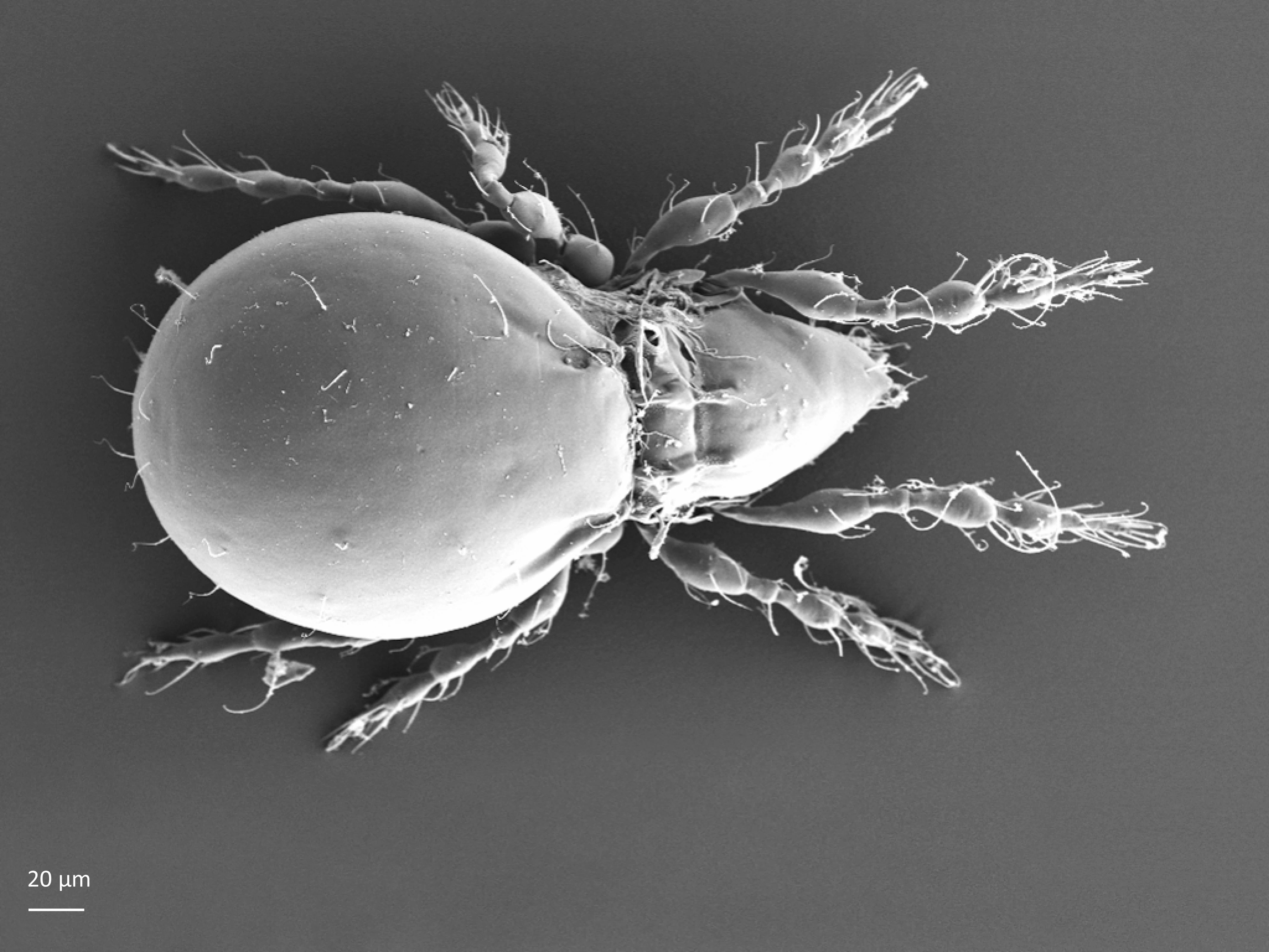Oppiidae
The family Oppiidae occurs worldwide and is one of the most common groups found in many habitats. These mites are pioneers colonizing barren or disturbed environments.
- Innhold
- Characteristics
- Habitat and ecology
The family Oppiidae is rich and includes (as of 2023) 13 subfamilies 131 genera, 45 subgenera, 1092 species and 52 subspecies (Subías 2023).
Characteristics
The adults are usually small, seldom medium sized (120–550 µm long) and light brown. Their legs are thickened like a string of pearls and have one claw. The prodorsum may or may not have a pair of lamellar costulae. If the lamellar costulae are present, they are shorter than half the length of the prodorsum. If a crista is present in front of the notogaster [shown in Oppiella nova (Oudemans, 1902) described here], it is not longer than one third of length of the notogaster. The notogaster has 9–10 notogastral setae (Weigmann 2006, Norton and Behan-Pelletier 2009, Behan-Pelletier and Lindo 2023).
Habitat and ecology
Some Oppiidae species, like Oppiella nova described here, are extremely eurytopic, which means that they occur in many different habitat types and are often numerous. They are pioneers in ecological succession, for example on post-industrial dumps (Skubała 2004). They are found in soils, litter, in moss cushions, on trees and other plants, on lichens, stones and walls. Some species are hygrophilous and occur in moist habitats, for example in peatlands. Species of Oppiidae feed primarily on fungi, but some are predators (Behan-Pelletier and Lindo 2023).
Some reproduce bisexually and some are parthenogenetic (Maraun et al. 2019), which means that only females are present, and they are produced from unfertilized eggs. The time of development has been studied in seven species under laboratory conditions (Pfingstl and Schatz 2021). Depending on the species and temperature that varied in different experiments from 15° C to 32° C, the development from egg to adult lasted from 14 to 60 days, which shows that Oppiidae develop quickly.
References
Behan-Pelletier VM and Lindo Z (2023). Oribatid Mites. Biodiversity, Taxonomy and Ecology. CRC Press, 508 pp.
Maraun M, Caruso T, Hense J, Lehmitz L, Mumladze L, Murvanidze M, Nae I, Schulz J, Seniczak A and Scheu S (2019). Parthenogenetic vs. sexual reproduction in oribatid mite communities. Ecology and Evolution 9(12), 7324–7332. doi.org/10.1002/ece3.5303
Norton RA and Behan-Pelletier VM (2009). Suborder Oribatida. In: GW Krantz and DE Walter (eds.). A manual of Acarology, 3rd ed. Texas Tech. University Press Lubbock, 430–564.
Pfingstl T and Schatz H (2021). A survey of lifespans in Oribatida excluding Astigmata (Acari). Zoosymposia 20, 007–027. doi.org/10.11646/zoosymposia.20.1.4
Skubała P (2004). Colonization and development of oribatid mite communities (Acari: Oribatida) on post-industrial dumps. Wydawnictwo Uniwersytetu Śląskiego/Uniwersytet Śląski w Katowicach (UŚ). 206 pp.
Subías LS (2023). Listado sistemático, sinonímico y biogeográfico de los Ácaros Oribátidos (Acariformes, Oribatida) del mundo (1758−2002). Graellsia 2004, 60 (número extraordinario), 3−305. Updated 2023 – 18 actualization, 540 pp., access December, 2023.
Weigmann G (2006). Hornmilben (Oribatida). Die Tierwelt Deutschlands. 520 pp. Vol. 76, Goecke and Evers, Keltern.
